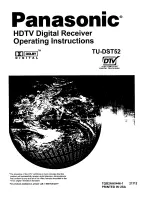
32
TransNET OEM Integration Guide
05-3946A01, Rev. C
Invisible
place
holder
Figure 15. Co-Located Masters Sharing an Antenna
7.0 DEALING WITH INTERFERENCE
The radio shares the frequency spectrum with other services and other Part 15
(unlicensed) devices in the USA, Canada, and certain other countries. As
such, near 100% error free communications may not be achieved in a given
location, and some level of interference should be expected. However, the
radio’s flexible design and hopping techniques should allow adequate perfor-
mance as long as care is taken in choosing station location, configuration of
radio parameters and software/protocol techniques.
In general, keep the following points in mind when setting up your commu-
nications network:
1. Systems installed in rural areas are least likely to encounter interference;
those in suburban and urban environments are more likely to be affected
by other devices operating in the license-free frequency band and by
adjacent licensed services.
2. If possible, use a directional antenna at Remote sites. Although these
antennas may be more costly than omnidirectional types, they confine the
transmission and reception pattern to a comparatively narrow lobe, which
minimizes interference to (and from) stations located outside the pattern.
3. If interference is suspected from a nearby licensed system (such as a
paging transmitter), it may be helpful to use horizontal polarization of all
antennas in the network. Because most other services use vertical
polarization in these bands, an additional 20 dB of attenuation to
interference can be achieved by using horizontal polarization.
Master—Network “A”
CS Master
Power
Divider
(– 3 dB)
Omnidirectional
Antenna
Master—Network “B”
CS Slave
Network “A”
Network “B”
RF
RF
Data
Data
TransNET
XCVR
User I/O
Interface
TransNET
XCVR
User I/O
Interface
















































